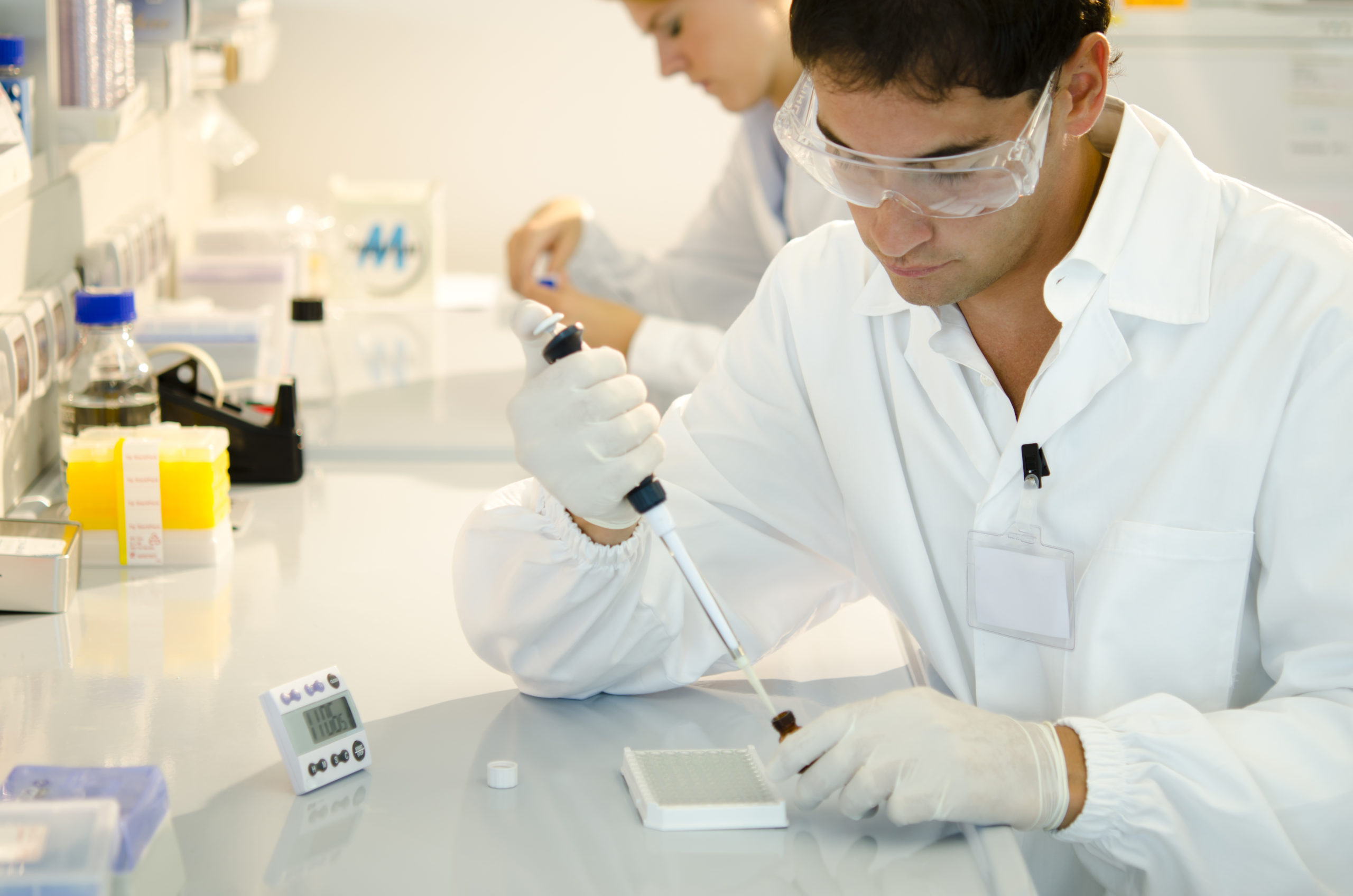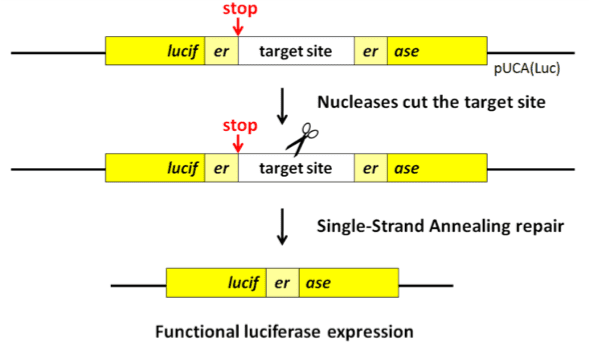CRISPR Plasmid Construction
Some of the most critical steps for successful CRISPR/Cas9-based genome editing services are sgRNA design and construction, as it determines the specificity of targeting. Our technical team carefully designs and validates sgRNAs, only those with high specificity and activity are selected before proceeding to downstream steps.
Service Description
| sgRNA Targeting Species | sgRNA Promoter | Plasmid Screening Markersb | Deliverables | Delivery Criteriac | Optional Servicesd | Delivery Time |
| Rat, Mouse, Human, Primate, Other Mammals. a | U6
T7 |
PuroR
mCherry |
Plasmid
Sequencing file Quality report |
Total amount > 5 μg
Concentration > 50 ng/μL Enzyme digestion validation Sanger sequencing |
sgRNA efficiency determination | 10 business days |
- Consult us for genes of species other than mouse and rat.
- Other resistant genes and fluorescent reporter genes are available upon request, please consult us.
- Different amounts of plasmid are available upon request. Endotoxin-free maxiprep plasmid can be provided.
- We offer in vitro sgRNA analysis services, as detailed in corresponding service descriptions.
Service Procedure
- Confirm sgRNA targeting gene
- Design sgRNA and send to the client for confirmation
- CRISPR plasmid design, construction and detection
- Deliver plasmid and quality report
CRISPR Activity Assay
After designing sgRNAs in silico with our plasmid preparation service, a critical step is to select high-activity sgRNAs efficiently and accurately. We developed the UCA method, [YL1], a highly sensitive, simple, and convenient in vitro method capable of determining sgRNA activity rapidly. UCA is high throughput compatible, and is based on the Single Strand Annealing (SSA) mechanism [1] (Figure 1).
Figure 1. Schematic diagram of CRISPR/Cas9 activity determination using SSA mechanism.
After a CRISPR/Cas9 eukaryotic expression plasmid (expressing Cas9 and sgRNA) and pUCA plasmid are co-transfected into cells, the Cas9-sgRNA complex will bind and cleave the target site corresponding to the sgRNA on the pUCA plasmid. The SSA DNA repair mechanism is then triggered, and when the homologous complementary sequence of luciferase (er) forms a complete coding sequence for luciferase, this gene will be expressed. Luciferase activity is the readout for sgRNA activity; the higher the luciferase signal, the higher the sgRNA activity.
Many sgRNA designing tools now offer the capability of predicting sgRNA activity; however, great difference remains between predicted results and actual activity. Therefore, it is necessary to validate sgRNA activity experimentally to ensure the success rate of subsequent experiments.
Our data indicates that the UCA method is capable of predicting sgRNA activity in vivo, and has been cited in several high-impact journals [2,3]. In summary, high-activity sgRNAs validated by Biocytogen’s UCA system contribute to the success of CRISPR/Cas9 gene editing.
Service Advantages
- Highly efficient and rapid: 2 week turnaround, from sgRNA design to validation via activity assay
- Sensitive, accurate, and close to in vivo activity
- No species restriction
[1]. Mashiko, D, et al. “Feasibility for large-scale mouse mutagenesis by injecting CRISPR/Cas plasmid into zygotes. ” Development Growth & Differentiation 56.1(2014):122.
[2]. Wu M, Wei C, Lian Z, et al. Rosa26-targeted sheep gene knock-in via CRISPR-Cas9 system[J]. Scientific reports, 2016, 6.
[3]. Lin, Zhimiao, et al. “Stabilizing mutations of KLHL24 ubiquitin ligase cause loss of keratin 14 and human skin fragility.” Nature Genetics 48.12 (2016): 1508-1516.
Donor Plasmid Construction
Biocytogen has more than 10 years of experience, developing thousands of mouse, rat, and cell lines. Our rapid plasmid design and constructing services are suitable for targeting vectors (ESC/EGETM-based gene editing) and transgenic vectors (Tol2 transgenesis).
Service Description
| Speciesa | Deliverables | Delivery Criteria | Optional Services |
| Rat
Mouse Cell line |
Plasmid
Sequencing file Quality report |
Total amount > 5 μg
Concentration > 50 ng/μL Enzyme digestion validation Sanger sequencing |
Endotoxin-free maxiprep plasmid
Pronucleus injection plasmid preparation |
Service Procedure
- Confirm gene(s) of interest, design and establish gene editing strategy;
- Design plasmid sequence and send to the client for confirmation;
- Construct the plasmid;
- Deliver plasmid.

Request a Quote
Contact us today to find out how we can help advance your research with custom generated rat, mouse or cell line models.



